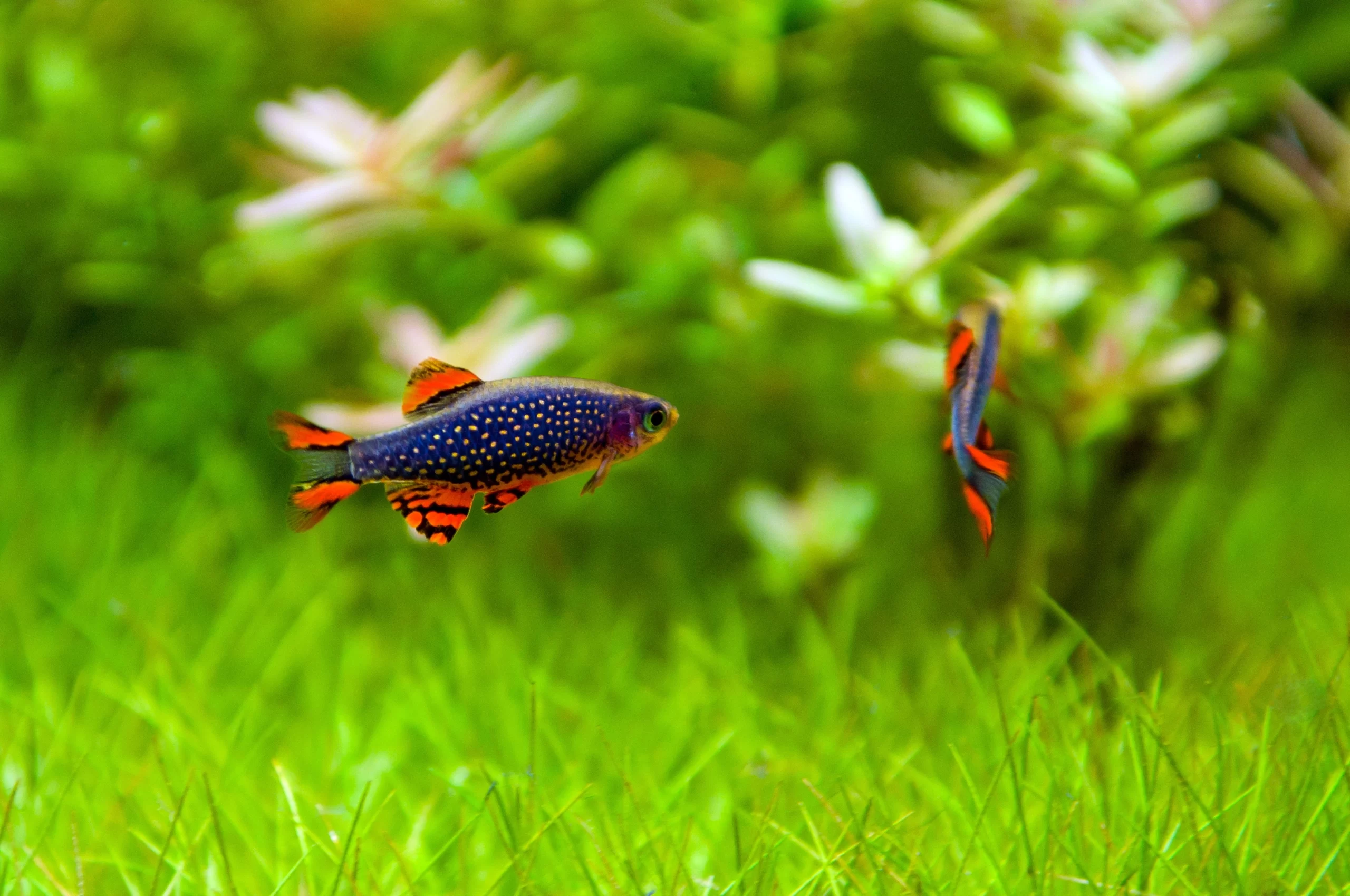

Calestial pearl danio (Danio margaritatus)
Calestial pearl danios are probably the most attractive fish available if you are looking for a nano fish. Due to its small body size of only 3 cm maximum, these fish are especially often in the stocking selection for smaller tanks. But also in larger aquariums these animals are very nice to look at in a larger group.
Water parameters for calestial pearl danios
- PH value: 6 – 7.5
- GH (total hardness): 5° – 18° dGH
- KH (carbonate hardness): 3° – 20° dKH
- Temperature: 20° – 25°C
Appearance
The body of the calestial pearl danios is basically gray. However, this is covered with whitish spots. The fins of this fish are striped in the colors orange, black with transparent spots. In the males, moreover, the anal fin is clearly striped in these colors. In females, this is mostly transparent with slight orange accents at the base of the fin. In addition, the belly of males is subtly orange. This coloration is also absent in females. With adequate feeding and good husbandry, calestial pearl danios usually grow to 2 – 2.5 cm in size. The maximum length of the fish is 3 cm.
Breeding
The breeding of calestial pearl danios is extremely simple. Therefore it is also suitable for beginners. For breeding, a male animal is placed with several females in a 60l aquarium. This must be extremely densely overgrown. Moss and fine other plants are best suited. The tank does not need light or a filter. As soon as the mating process is finished, i.e. the male fertilizes the eggs of the female, the parents should be removed from the aquarium. Otherwise, they may eat the eggs. After several days, fry will be swimming around the tank. To guarantee that there is enough food, you can immediately start feeding especially small food such as dust food.
Keeping calestial pearl danios
Calestial pearl danios are easy to care for animals. To keep a group of 10 specimens, an aquarium size of 60l is recommended. However, keeping about 6 animals in a 30l tank can also be successful. However, the setup and other characteristics must be exactly adapted to these animals. Therefore a dark substrate and strong planting is recommended to imitate their natural habitat. Also floating plants with long roots or furnishings such as wood or stones, which create a hiding place, are helpful. With the filter, it should be noted that it does not cause too strong a current, otherwise the fish could hide. Feeding can be done with simple granules, which sink to the bottom. Food that floats on the surface, these fish often do not accept.